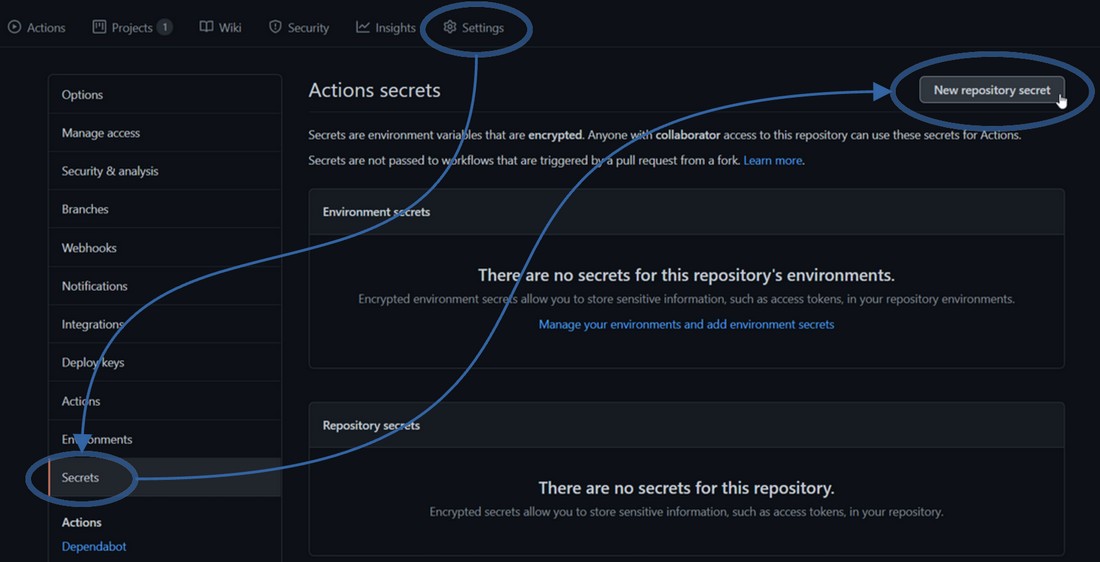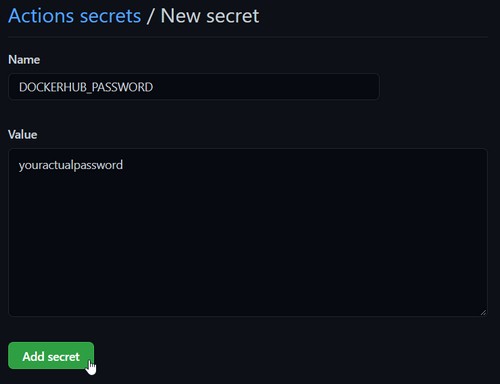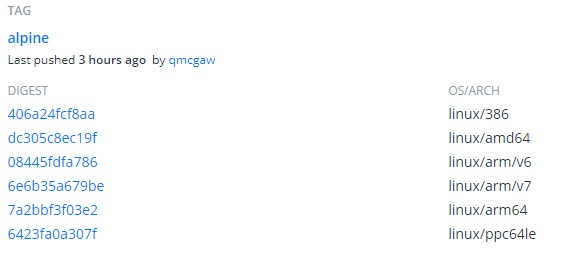We will design a continous integration (CI) using Github Actions to automatically build a simple Alpine based Docker image for every CPU architecture supported by Docker.
The final image will only print the machine type for this experiment using uname -m.
Make sure to check out the Conclusion which highlights more posts about Docker image cross compilation with programming languages such as Go.
Prerequisites
- Have a Github account
- Have a Github repository
Repository setup
Have this minimal file structure in your repository:
.
├── .git
├── .github
| └── workflows
| └── docker.yml
└── Dockerfile
Dockerfile
# Always pin your image version
ARG ALPINE_VERSION=3.13
FROM alpine:${ALPINE_VERSION}
ENTRYPOINT [ "uname -m" ]
This image will just show the CPU architecture of the Alpine system.
You can try with:
docker build -t test .
docker run -it --rm test
And it will show your native architecture, usually x86_64.
Github workflow docker.yml
Let’s start with a minimal code in .github/workflows/docker.yml:
name: docker
on:
push:
paths:
- .github/workflows/docker.yml
- Dockerfile
pull_request:
paths:
- .github/workflows/docker.yml
- Dockerfile
jobs:
verify:
runs-on: ubuntu-latest
env:
DOCKER_BUILDKIT: "1"
steps:
- uses: actions/checkout@v2
- name: Build image
run: docker build .
This workflow will only trigger if both of these conditions are met:
docker.ymland/orDockerfileis modified- A
pushor apull_requestis made on the repository
A push means a git push on the main branch or any branch of the repository.
A pull_request is when a pull request is made, either from the same repository or the forked repository.
The workflow has only one job called verify which simply builds the Docker image without saving it.
This is useful to have a quick failure detection mechanism building and targeting your native OS, since cross CPU architecture compilation is slower.
The publish job
Let’s add the publish job to your docker workflow.
Its task will be to cross CPU build your Docker image and push them to Docker Hub.
It should only trigger on push events such that:
- Pull requests from forked repositories do not trigger it, for obvious security reasons
- To avoid duplicating the task when pushing to a branch with an opened pull request
Add this block below the verify job block:
publish:
needs: [verify]
if: github.event_name == 'push'
runs-on: ubuntu-latest
steps:
- uses: actions/checkout@v2
- uses: docker/setup-qemu-action@v1
- uses: docker/setup-buildx-action@v1
- uses: docker/login-action@v1
with:
username: dockerhubuser
password: ${{ secrets.DOCKERHUB_PASSWORD }}
- name: Set image tag variable
id: vars
env:
EVENT_NAME: ${{ github.event_name }}
run: |
BRANCH=${GITHUB_REF#refs/heads/}
TAG=${GITHUB_REF#refs/tags/}
if [ "$TAG" != "$GITHUB_REF" ]; then
echo ::set-output name=tag::$TAG
elif [ "$BRANCH" = "main" ]; then
echo ::set-output name=tag::latest
else
echo ::set-output name=tag::$BRANCH
fi
- name: Cross build and push final images
uses: docker/build-push-action@v2
with:
platforms: linux/amd64,linux/386,linux/arm64,linux/arm/v7,linux/arm/v6,linux/s390x,linux/ppc64le,linux/riscv64
tags: |
yourdockerhubusername/testimage:${{ steps.vars.outputs.tag }}
push: true
Now let’s replace some values:
- Replace
yourdockerhubusernamewith your actual Docker Hub username, for example mine isqmcgaw - If you main branch is called
masterand notmain, replacemainwithmaster
Finally, go to your Github repository settings to add your Docker hub password as a secret


Run it
Finally add your files to Git and push it to Github
git add .
git commit -m "Github workflow to build Docker images"
git push
This will trigger the workflow you can see in https://github.com/youruser/yourrepo/actions
Docker Hub
You can go to your Docker Hub repository tags page at
https://hub.docker.com/r/yourdockerhubusername/testimage/tags
And you should see the image with all the CPU architectures. For example, mine looks like:

Pull it
Now let’s try running it pretending we’re another CPU architecture such as arm64.
docker run -it --rm --platform=linux/arm64 yourdockerhubusername/testimage
And that should print aarch64 meaning it will automagically pull the right image for the right architecture.
Conclusion
This allows you to build and push Docker images for multiple architectures.
Note however that this can be limited depending on the base image OS you use.
Alpine has good support for all CPU architectures, but that is really not the case always.
If you build your own program, you should also make sure it is compatible with the target CPU architecture.
Finally, since building images for other target CPU architectures run with an emulation layer (qemu), this can be quite slower than building natively. For languages allowing you to cross build natively such as Go or Rust, you should instead build your binaries on the build platform without emulation.
ℹ️ How to cross build Docker images with Go programs using the Go toolchain
Comments